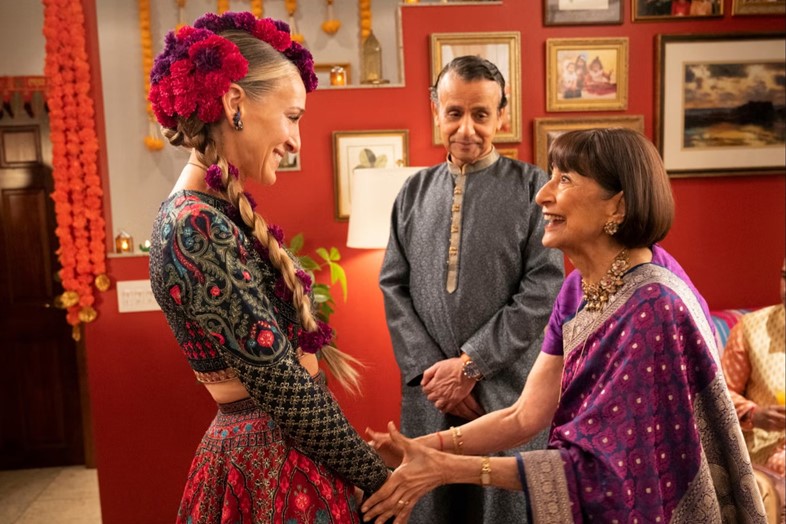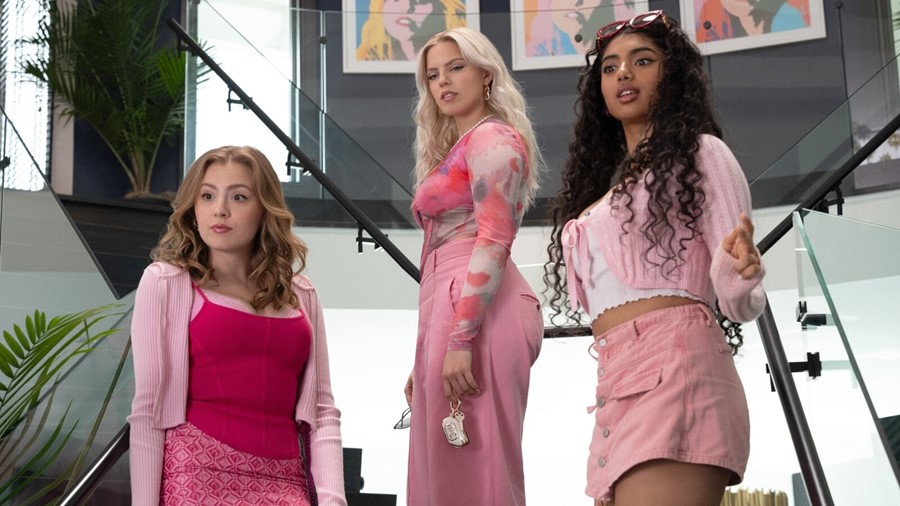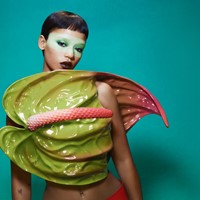Diversity was a top priority for the 2024 movie-musical adaptation of Mean Girls, but how effective is representation politics when marginalised characters are consistently mistreated or underdeveloped on the big screen?
When it was first announced that Mean Girls, Tina Fey’s 2004 teen comedy, would have a movie-musical adaptation, I could almost hear the internet let out a collective groan of agony. Coming off the back of several sequels, remakes and reboots such as And Just Like That (2021), Hocus Pocus 2 (2022), The Proud Family: Louder and Prouder (2022), Scream (2022), The Hunger Games: The Ballad of Songbirds and Snakes (2023) and Wonka (2023), agitation had started to grow towards the nostalgia economy, with several online commentators complaining that “not every film needs a remake”. But Mean Girls, or more so, its marketing team, adamantly asserted that the new version of the cult classic would “not be a remake” but a “rediscovery”.
2024 marks 20 years since the film’s original release, and comedy has evolved in that time. Fuelled by political movements such as #MeToo in 2017 and the murder of George Floyd in 2020, what is considered appropriate and inappropriate to portray on film and television has rightly shifted. As a result, the new adaptation of Mean Girls has several alterations: in the movie, Coach Carr (Jon Hamm) no longer has sexual relationships with underage students, cafeteria cliques are no longer defined by race, and racial stereotypes are no longer used; ableist slurs are no longer thrown around, and homophobic jokes and remarks are almost non-existent. Furthermore, within the main cast, Janis (Auli’i Cravalho) is an actual lesbian, and there is more Black, South Asian and Polynesian representation in the film. The “Plastics”, who are meant to be Barbie dolls personified, are no longer just a gang of skinny white or light-skinned women. They now represent what Barbies look like today: darker-skinned, mid-sized, Latina, and much more. Perfection now comes in all shapes, sizes and ethnicities.
While the movie tries to diversify its cast and remove the offensive language it once used, the dialogue is almost entirely the same as the original. Fey’s endlessly quotable script, which has permanently ingrained itself within pop culture, was simply regurgitated back to us. The only difference is that this version has long, annoying songs you won’t remember once you leave the cinema. In a recent interview with the New York Times, Fey remarked that she tried not to change the script too much for this version of Mean Girls: “As long as I don’t accidentally make Monkey Jesus out of it – you know, like when that lady tried to fix that painting – then we’ll be in good shape.” But the film isn’t in good shape at all. The once confident, biting satire about high school life now feels tense and unsure of itself. One reason for this is that the film doesn’t sufficiently adapt itself to the new variations of its characters. This is most apparently felt in the new iteration of Regina George, played by Reneé Rapp. The actor was a shining light in an otherwise dull and uninspired film; however, it felt strange to keep the movie’s storyline fixated on making Regina fat when the actress is mid-size. The purpose of the original storyline was to make the notoriously slim and unblemished Regina fat and ‘ugly’ by giving her Kälteen Bars used to help African children gain weight. Cady concocted this act of deception to make Regina lose her social position and make her feel like the individuals she often ridiculed, but Rapp is not slim.
We don’t need a remake of mean girls. Like pls be original with these movies.
— jupiter’s daughter (@__Tyraaaaa) October 14, 2023
This is one of the moments where it felt like the storyline should’ve changed. It no longer made much sense for this rendition of the film. Additionally, the movie’s focus on weight negatively impacted Rapp, who played Regina on the Broadway adaptation of Mean Girls between 2019 and 2020. In an interview with The Guardian, Rapp revealed that she almost left the production because the staff and audience “would say some vile fucking things to me about my body”. The body shaming exacerbated her eating disorder, which resulted in her parents flying to New York to take her out of the production. Not only does this plot point feel slightly confusing, but there was also little consideration of how this storyline would impact Rapp and the focus it would put on her then-teenage body. This is the unfortunate result of a lazy attempt at diversification.
The Black Lives Matter protests in 2020 prompted film and television studios to re-examine their diversity and inclusion practices, and we have seen some change since then. Last year, the 10th annual Hollywood Diversity Report found that more top television shows and films feature racially diverse casts. However, while representation may be at an all-time high, it is still largely inaccurate, especially in remakes and sequels, where marginalised people are shoehorned into these storylines to fix the sins of the source material. Cultural critic Charlie Squire wrote about this at length regarding Sex and the City’s (SATC) revival, And Just Like That (AJLT). Squire writes that SATC’s past transgressions do not make it good but “they do make it honest. In what world would these wealthy white women in the 1990s not be racist?” They argue that some of the changes made in AJLT feel “so progressive, they’re regressive”, such as Carrie, Charlotte and Miranda each being given a one-dimensional friend of colour, who are primarily used to prop up the white main characters. For example, in season one, episode six, Carrie follows Seema (Samantha’s replacement) to her family’s Diwali celebration. Carrie wears a lehenga to the festival, but it’s mistakenly called a sari in the show because the writers fail to double-check what it is actually called. Carrie and Seema then proceed to have a very tiresome conversation about cultural appropriation, and the whole scene feels like they are trying to tick boxes on a politically correct checklist rather than truly explore the festival of Diwali.

The same critiques have been launched towards shows like Bridgerton and Stranger Things, which both have diverse characters in their primary and secondary cast but are too often sidelined or underdeveloped. Caleb McLaughlin, who plays Lucas Sinclair in Stranger Things, has been vocal about the racist abuse he’s suffered from fans while on the show. While a lot of this comes down to the fact we live in a racist society, it is also because his character is poorly written, which has resulted in the audience liking his character less than his white counterparts. In their examination of the show for Roger Ebert, TV critic Kaiya Shauyata writes that even “after six years, the Duffer Brothers still don’t know what to do with Lucas.”
here's caleb talking about how he had to deal with racism just because he was "the black kid who was mean to eleven in season 1" and felt like it was important to share his thoughts on that :) #StrangerThings#TUDUM#CalebMcLaughlin@HComicConBEpic.twitter.com/JZoXS9aaBW
— liam ☾ (@soapymoony) September 25, 2022
In her interview with the New York Times, Fey mentions not once but twice how much she detests our culture of virtue signalling. She argues that people are “just as divisive and horrible as they ever were, but now they couch it in virtue.” However, attempts at diversity without any real work to adequately fit marginalised people into the storyline or do them justice is the same type of virtue signalling that she attempts to distance herself from. Including marginalised people in film and TV has become a way to signal a kind of progressive politics, but it’s a narrow and empty type of politics that can hurt marginalised people more than it helps them. It’s not just the quantity of representation on TV that we should care about, but the quality of it, too.




